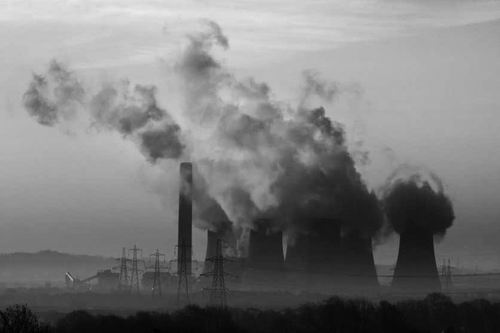
2024 was the first single year to break the 1.5°C global warming threshold. Now, leading climate scientists are warning for the first time that global warming could exceed 2°C for the first time by 2029.
Scientists at the UK Meteorological Office use climate observation data and models from research institutions around the world to predict the global climate for the next five years every year. The latest forecast shows that by 2029, the average temperature in a single year may be 2°C higher than pre-industrial levels.
"This would have been impossible a few years ago," Adam Scaife of the UK Meteorological Office said at a press conference recently, adding that such an event would be "unprecedented."

Greenhouse gas emissions have caused 1.44°C of warming since pre-industrial times. Image credit: Chris Conway/Getty Images
The 2015 Paris Agreement aims to limit global warming to well below 2°C above pre-industrial levels and sets a target of keeping warming at or below 1.5°C.
Driven by rising emissions and a strong El Niño weather pattern, last year became the first single year on record to exceed the 1.5°C threshold. There is an 86% chance that at least one of the next five years will breach the same threshold, according to the Global Interannual to Decadal Climate Update produced for the World Meteorological Organization (WMO).
Meanwhile, the researchers predict there is a 70% chance that average warming will exceed 1.5°C between 2025 and 2029. By comparison, the 2024 report (covering 2024 to 2028) gave a 47% chance. “These latest projections suggest that we are not far off from seeing 1.5°C warming years become the norm,” Scaife said.
The chance of global warming exceeding 2°C in a single year remains very small, with the WMO/British Met Office team estimating the probability at 1%. "It's a very small chance, but it's still possible," Leon Hermanson of the UK Met Office said at a press conference. "It's something no one wants to see, but that's what the science tells us."
Scaife said that getting annual mean temperatures above 2°C would likely require a combination of factors, including a strong El Niño pattern, which would drive warming in the Pacific Ocean, and a positive Arctic Oscillation, which would boost warming over Eurasia. Although currently a small probability, the likelihood of a 2°C year is expected to increase dramatically in the coming years unless greenhouse gas emissions decline rapidly.
Just 10 years after the UK’s national weather service and the WMO first confirmed the likelihood of global warming exceeding 1.5°C, the world is now teetering on the brink of breaching that 1.5°C threshold – the report estimates that the current long-term average temperature is 1.44°C above pre-industrial levels.
“We were facing 1.5°C in 2015 and now we are at 2°C,” Hermanson said. “If we continue on this path, the probability of a year with more than 2°C will increase dramatically.”
Chris Hewitt of the WMO said there was still a window of opportunity to minimize the negative impacts of climate change by drastically cutting emissions and keeping temperatures as close to the 1.5°C threshold as possible. "Every 0.1°C of warming counts."
(Original title: Global temperature rise may exceed 2°C for the first time by 2029)
- jvgQwXuIwSdvfEl05/31/2025
- OhPLmfwlJIvmwZ05/30/2025


